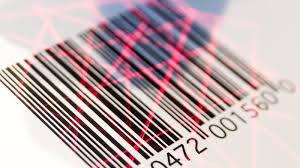In the fast-paced world of eCommerce and retail, proper product identification is critical. Whether you’re launching a new product or expanding your catalog on major platforms like Amazon or Walmart, one thing is essential — a valid UPC code.
But why do these little black-and-white barcodes matter so much? Because they are the global standard for tracking products, managing inventory, and ensuring a seamless buying and selling experience across the supply chain.
This article will walk you through how to use UPC codes to enhance product distribution and sales, and why choosing the right source — like UPCs.com — is critical to long-term success.
�� What Is a UPC Code?
A Universal Product Code (UPC) is a 12-digit number that uniquely identifies a retail product. It’s typically displayed as a barcode, which can be scanned at point-of-sale systems or used for managing product information online.
Why it matters:
Retail compliance: Major platforms like Amazon, Walmart, and Target require valid UPCs.
Inventory accuracy: Helps track sales, restocks, and product movement efficiently.
Product legitimacy: Builds trust with retailers, distributors, and consumers.
International recognition: UPCs are accepted globally, streamlining cross-border selling.
�� Why Businesses Need Authentic UPC Codes
Whether you’re a small business, private label seller, or large distributor, having genuine GS1-origin UPCs is vital. Using unofficial, recycled, or fake codes can lead to:
Product listings being removed
Account suspensions on Amazon
Inability to register products with distributors
Data mismatches across systems
That’s why sellers across industries trust GS1-based UPC codes from reliable providers like UPCs.com, which offers instant, authentic barcodes that work seamlessly with all major platforms.
�� Where UPCs Are Used
UPCs aren’t just for retail checkout. They play a vital role in:
Amazon and other online marketplaces
Retail stores and point-of-sale systems
Warehouse and logistics tracking
Product packaging and labeling
Global product identification
From selling skincare products on Shopify to distributing electronics in big-box stores, a UPC makes your product universally identifiable and scannable.
�� How to Use UPCs to Streamline Product Distribution
Here’s how UPCs can improve your product distribution strategy:
1. Easy Product Listing
Most platforms require a UPC when creating new product listings. If you have valid GS1-based codes, you’ll skip unnecessary delays and verifications. This is especially crucial for Amazon sellers, where improper codes can lead to errors or account restrictions.
2. Inventory and Supply Chain Integration
UPCs are essential for warehouse systems, order tracking, and automated inventory control. By assigning a unique UPC to every product variant (color, size, model), your business maintains accuracy and speed in logistics operations.
3. Global Expansion
Planning to go international? UPCs simplify cross-border listings and retail partnerships. Because they’re globally accepted, you won’t have to generate new codes or re-register products in different regions.
4. Avoiding Duplicate Listings
On platforms like Amazon, a valid UPC ensures you’re not duplicating existing listings or violating catalog policies. It also allows you to create brand new ASINs when needed.
✅ What Makes a UPC “Authentic”?
There are a lot of sketchy barcode sellers out there. But not all UPCs are created equal.
Authentic UPCs are:
GS1-origin (either licensed directly from GS1 or from resellers with original ownership)
Unique — never recycled or reused
Instant — delivered digitally for easy access
Registered to your business or brand
Companies like UPCs specialize in authentic, compliant UPC codes trusted by eCommerce sellers worldwide.
�� Tips for Managing Your UPCs Effectively
Once you have your UPCs, here’s how to maximize their use:
✔️ Keep a Master List
Track which UPC is assigned to which product variant. This avoids duplication and ensures seamless integration with new sales channels.
✔️ Match Titles and Descriptions
On Amazon or eBay, make sure product listings match the details tied to the UPC. Consistency boosts trust and visibility.
✔️ Integrate With Inventory Tools
Use software like Shopify, WooCommerce, or inventory systems (like Zoho or Cin7) to import your UPCs and automate stock management.
✔️ Avoid Overuse
Each UPC should represent only one unique product/variant. Don’t reuse UPCs for different products — this can lead to mislabeling and lost sales.
�� How UPCs Can Help Increase Sales
UPCs may be small, but they can have a big impact on your bottom line. Here’s how:
�� Better Visibility on Marketplaces
Amazon favors products with clean, GS1-compliant UPCs. Your products may appear higher in search and gain eligibility for Amazon Brand Registry.
��️ Faster Retail Onboarding
Distributors and retail buyers expect UPCs. Having a barcode ready makes it easier to partner with wholesalers, retailers, or even big-box stores.
�� Accurate Fulfillment
When every product has a unique barcode, fulfillment becomes faster and more error-free — reducing returns, refunds, and complaints.
�� Enhanced Trust
UPC codes lend professionalism to your product packaging, increasing consumer trust and brand credibility.
��️ Why Choose UPCs.com?
There are many barcode resellers online, but UPCs.com stands out for its:
✅ Instant delivery of UPCs
✅ GS1-origin codes (accepted by Amazon and retailers)
✅ One-time purchase — no ongoing fees
✅ Dedicated support for eCommerce sellers
✅ Transparent pricing and business registration
Their platform is designed for businesses that need reliable, fast access to authentic codes — whether you’re selling 5 products or 5,000.
�� Who Should Be Using UPCs?
Still wondering if you need UPC codes? If you fall into any of the categories below, it’s time to get them:
Amazon or eBay seller
Shopify or WooCommerce store owner
Retail brand launching a new line
Private label manufacturer
Wholesale distributor
Basically, if you’re selling physical products in any capacity, a UPC is your product’s passport to the digital and retail world.
�� Final Thoughts: Invest in UPCs That Work Everywhere
In a global economy, products that aren’t properly identified get lost in the shuffle. If you want your items to be found, bought, and reordered — a valid UPC is non-negotiable.
By investing in authentic, instant GS1-compliant codes from a trusted provider like UPCs.com, you’re setting your brand up for long-term growth and recognition in both online and offline markets.
Start with just one product — and scale as your catalog grows. The barcodes you buy today can be the foundation of a smarter, more profitable tomorrow.
Related Post:
- Pedrovazpaulo Business Consultant – Modern Business Solutions!
- Anthony Skaria – America’s Youngest Real Estate Powerhouse!
- Wepbound – Features, Benefits, and the Future of Work!
- Leah Gettens – Transforming Businesses with Lean Six Sigma!
- White Oak Impact Fund – Investing with Purpose and Profit in Mind


